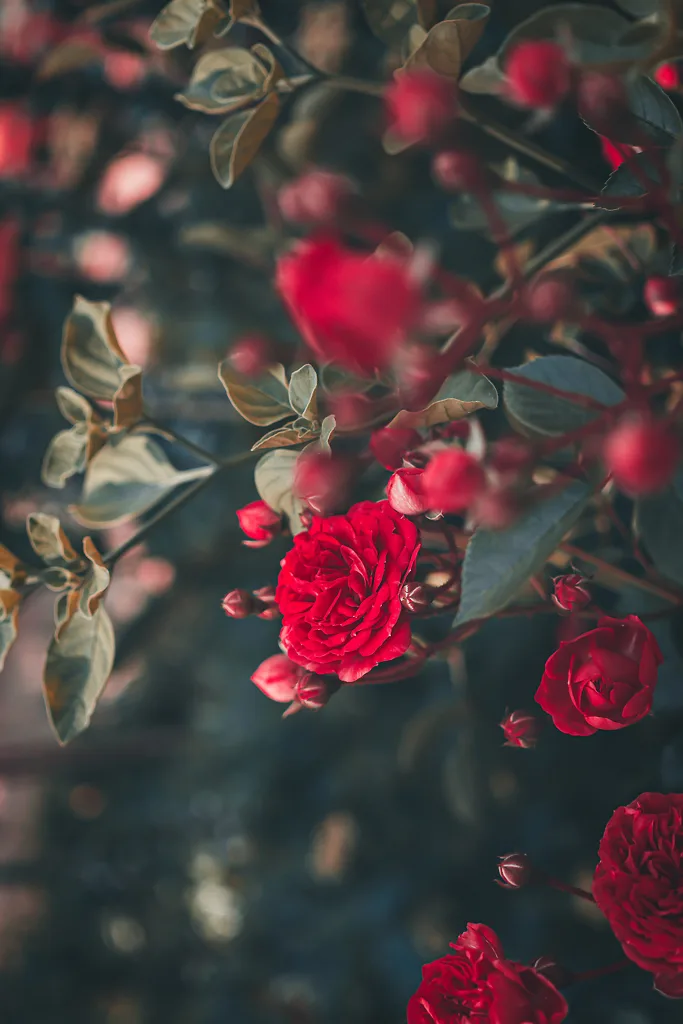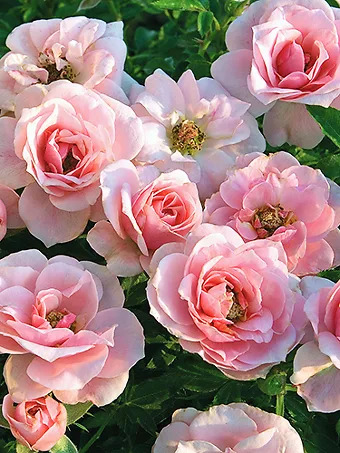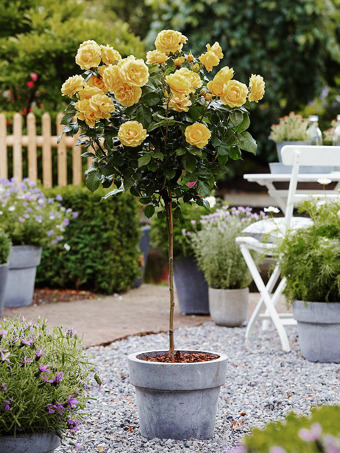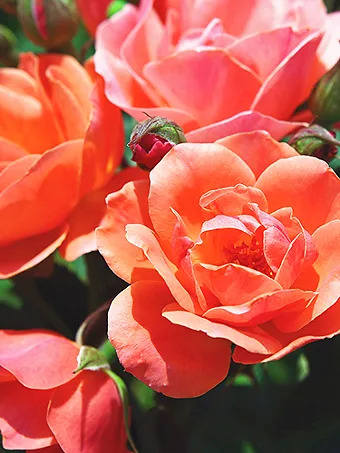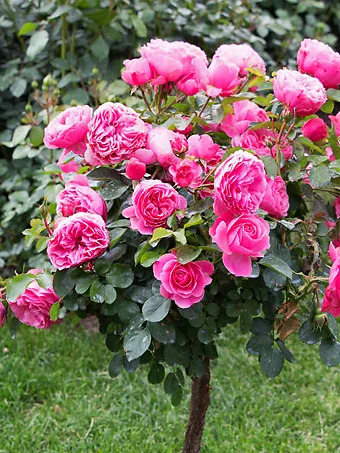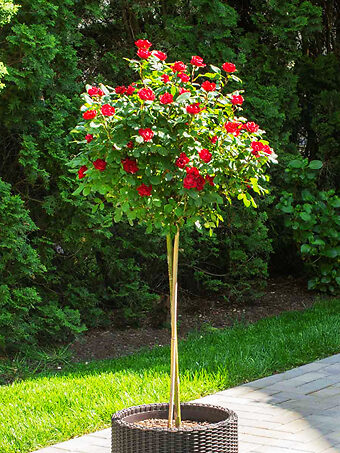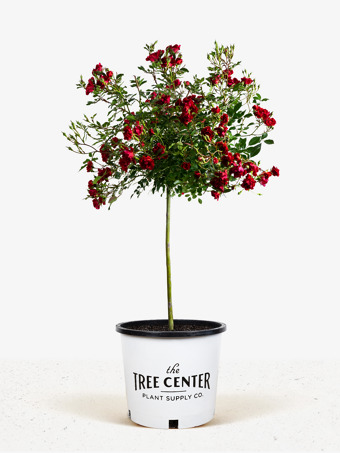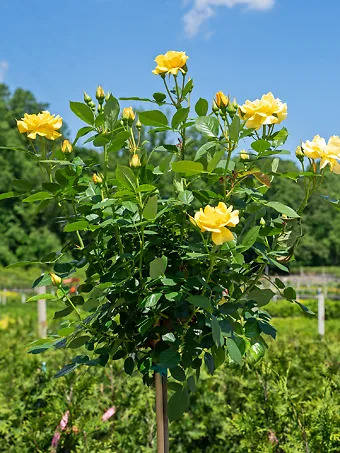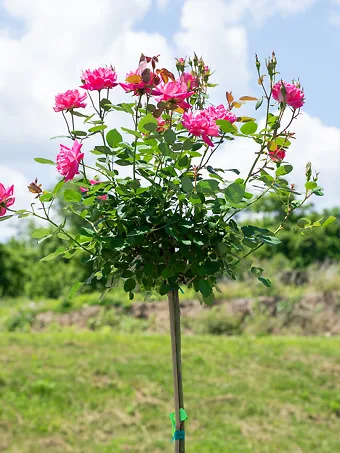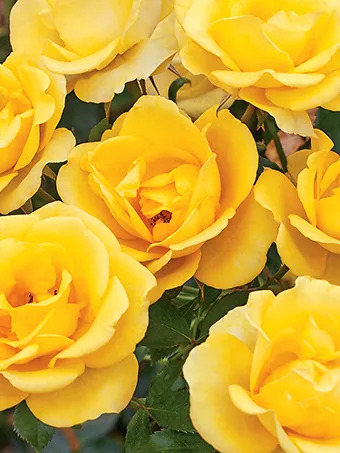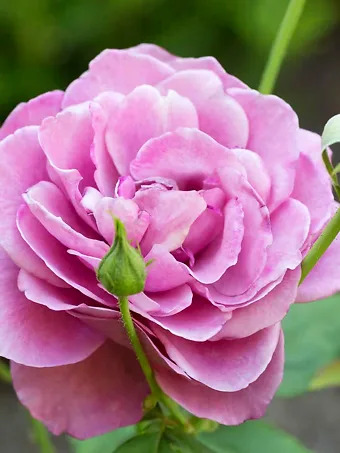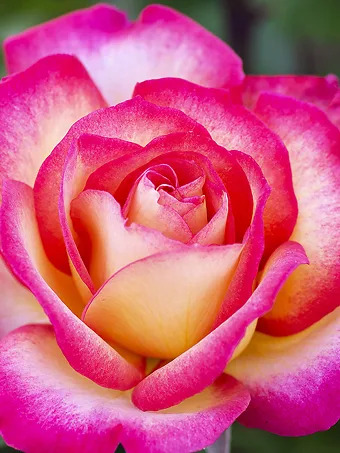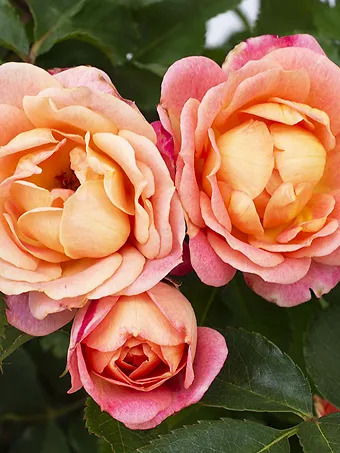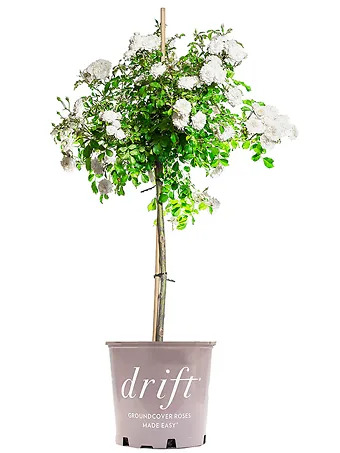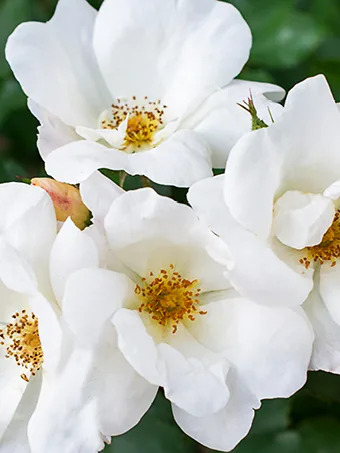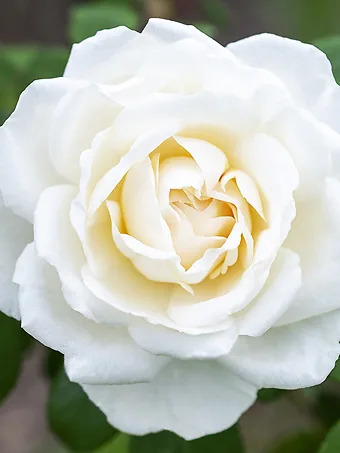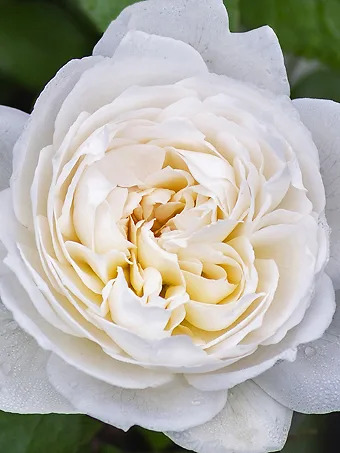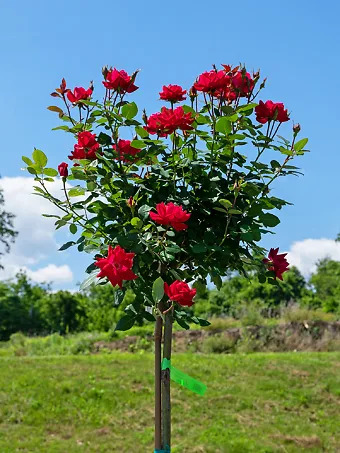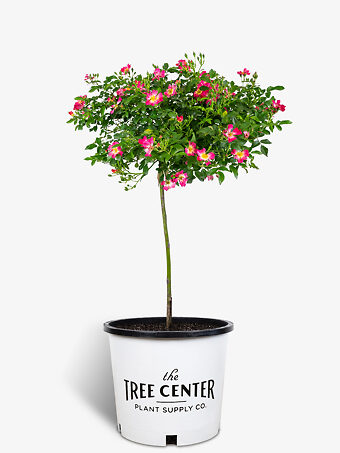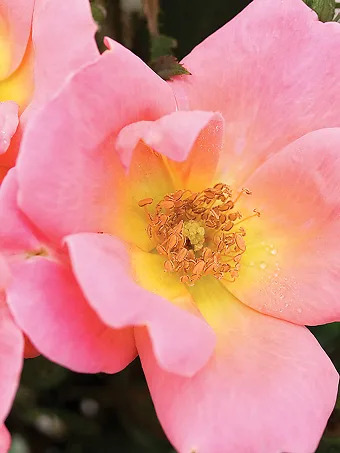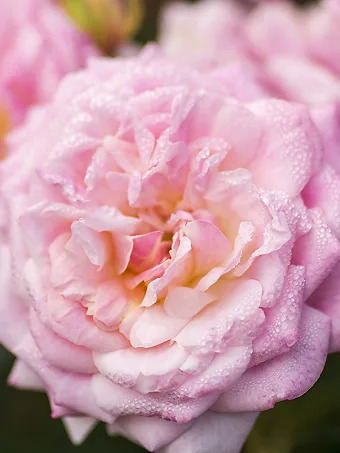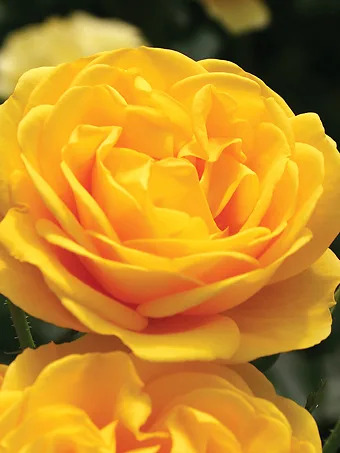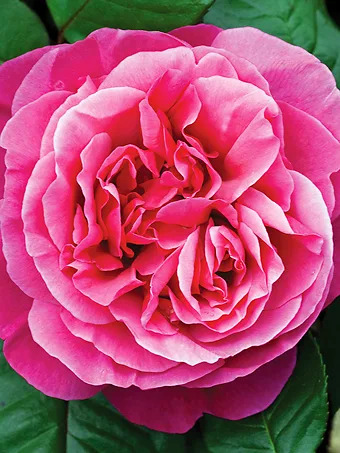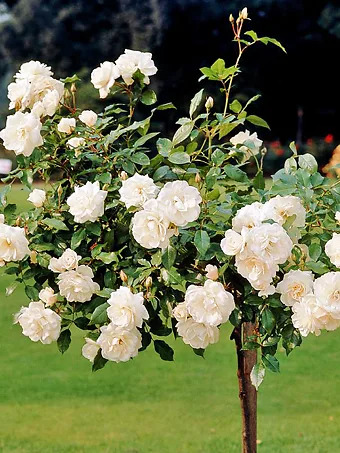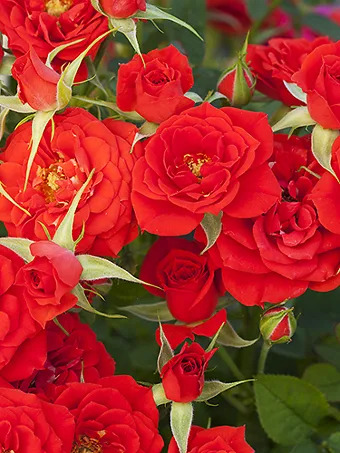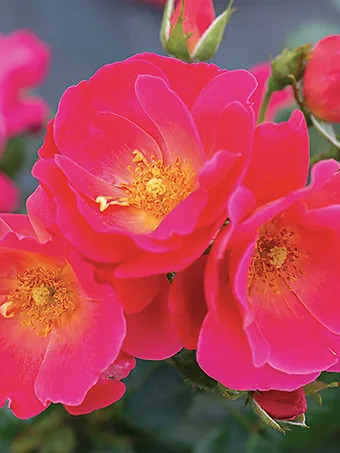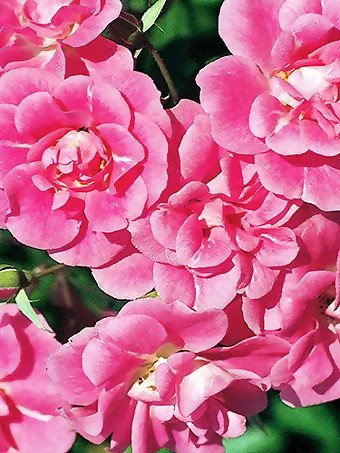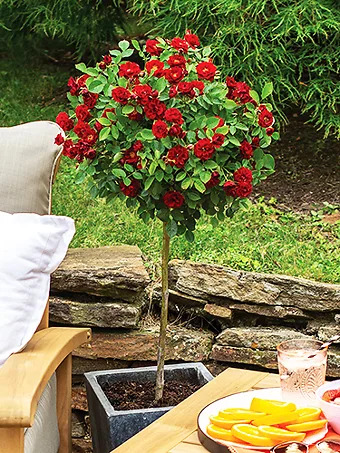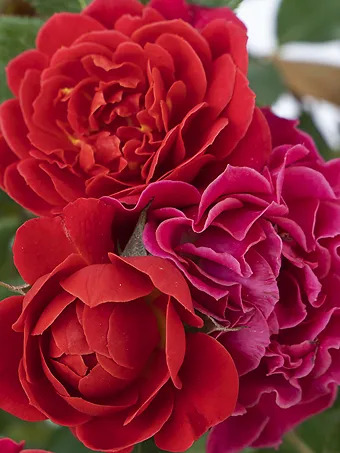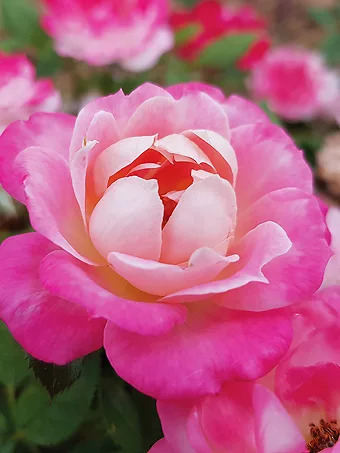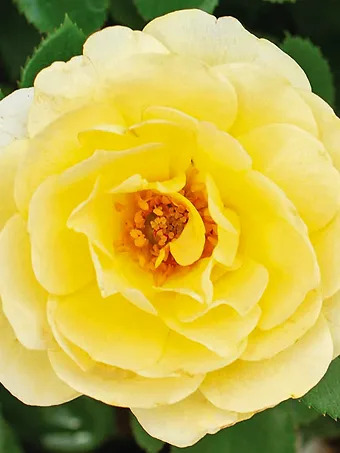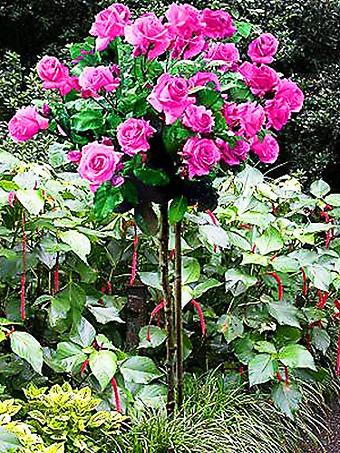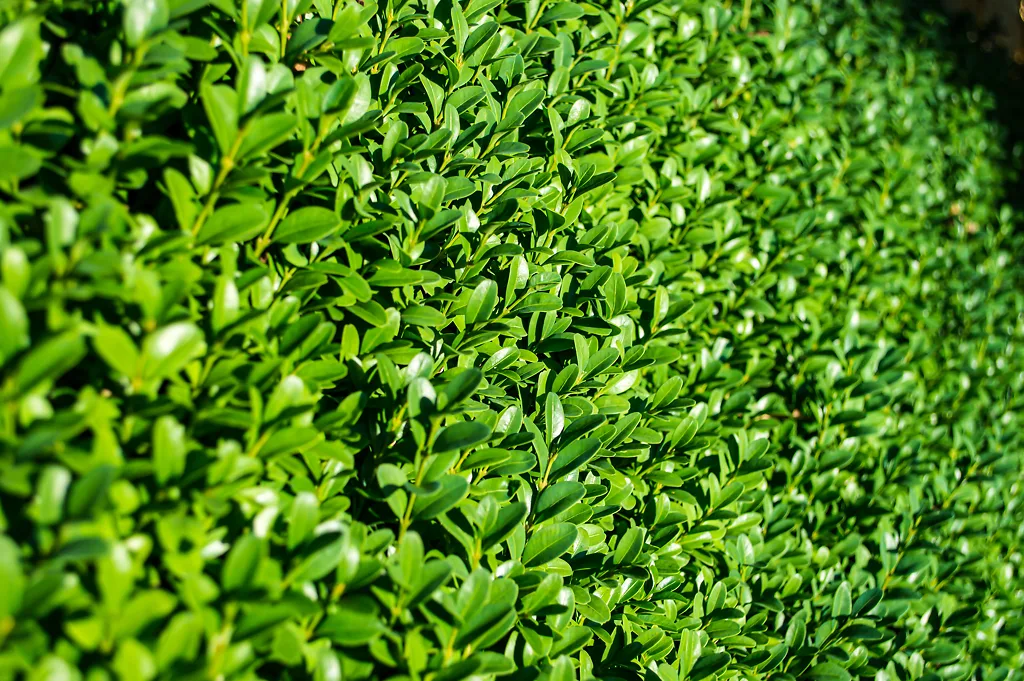Rose Trees For Sale
Roses are a popular garden plant, both for their value in the landscaping world and their unique beauty and fragrance. Many gardeners, however, have long struggled with the regular high-maintenance rose. William Radler cultivated the Knockout Rose in 2000 for this very reason, and now the Knockout Rose Tree can grace the garden landscape. These 3 to 4 foot trees are topped with a rounded crown covered in red, pink, or yellow flowers.
The Knockout Rose Tree now enables gardeners searching for the low-maintenance benefits of the Knockout Rose with the shape and arrangement of a small tree. Knockout Rose Bushes do well either in the garden or in pots, where they can line patios or walkways. Similar to the Knockout Rose shrub, Knockout Rose Trees prefer at least 5 to 6 hours of sunlight and well-draining, loamy soil. Water the Knockout Rose Trees at the ground, and avoid wetting the leaves as this increases the likelihood of fungi.
Proper research is an essential tool in any planting endeavor; this is especially true for rose varieties, such as the Knockout Rose Tree, which benefit from careful planning. Consider the planting location, soil type, and water distribution processes carefully before investing in a sapling from The Tree Center. Knockout Rose Trees, though hardier than the regular rose, still have specific requirements with regard to sunshine, soil, and water. Read the quick facts below before examining the following sections in detail to determine if the Knockout Rose Tree is the right fit for the given planting location.
Even though the Knockout Rose Tree is hardier than its cousin, the rose, it still requires adept care and love during the initial stages of growth. The Tree Center provides this beginning care, ensuring that with successful planting and at-home care, the Knockout Rose Tree will provide stunning roses in red, pink, or yellow.
How to Plant Knockout Rose Trees
Sun: Plant in full sun to partial shade, providing between 5 and 6 hours of sunshine a day.
Water: Water immediately after planting and twice a week to a depth of at least 2 inches. Water in the morning from the ground up. Avoid wetting the foliage.
Soil: Knockout Rose Trees require well-draining loamy soil with a pH between 6.0 and 6.5, preferably. Work well as potted plants or in raised garden beds.
When to Plant: Plant in early spring, though the Knockout Rose Tree can technically be planted at any time of the year.
As with any planting endeavor, the first step in planting the Knockout Rose Tree is to determine an appropriate location for planting the cultivar. Knockout Roses require heavy sunshine, although some partial shade is acceptable. Although Knockout Rose Trees are hardier to the cold and shade, they still benefit from between 5 and 6 hours of sunshine. Watering is essential, too. Consider installing a drip or hose sprinkler system that waters the Knockout Rose Tree from the ground-up.
Knockout Roses Trees can be planted in containers, in a flat garden bed, or in a raised garden bed. Containers often work well with Knockout Rose Trees as the soil inside the container is often easily controlled for drainage, necessary to the tree’s overall success. After the planting location has been settled, it is best to order the Knockout Rose Tree for springtime planting.
Observe the root ball of the Knockout Rose Tree. This is the collection of roots at the base of the tree. Dig a hole for the Knockout Rose that is twice as wide and twice as deep as the root ball. This is unlike many other trees and shrubs, where the holes are typically not as deep. Knockout Roses Trees benefit from well-draining soil, so it is advantageous to add a layer of compost or mulch to the bottom of the hole, tilling it into the soil. Fill the hole with the turned compost and soil mixture so that when placed in the hole, the Knockout Rose Tree’s root ball protrudes from the soil 1 inch. The tree will settle over time.
Next, refill the hole with soil and water, adding compost in as needed. If using mulch, add this now. Then, water immediately to a depth of 2 inches.
Soil Type
Of the many resources in contact with the Knockout Rose Tree, soil is one of the most important. The soil carries the air, water, and nutrients through the dirt so the plant can intake what it needs from the soil. The soil is categorized by its ability to drain water, its pH, its grain size, and its nutrient content. Knockout Rose Trees prefer loamy soil that drains well with a pH between 6.0 and 6.5.
The ability of the soil to drain water is easily tested quickly at home. Simply dig a hole in the area where the Knockout Rose Tree will be planted just before it rains. After the rain has passed, return to the hole. The soil drains well if the hole is empty of water. The soil drains poorly if the hole is still partially filled with rain water. Poor drainage can be compensated for by turning in compost or mulch.
The type of soil can also impact drainage. Soil is categorized into four main types based on grain size: clay, silt, sand, or loam. Clay and silt are made of small particles, which often block the movement of air and water. Sand is made up of large particles that move air and water too quickly. Loam is made up of a variety of particle sizes, making it the best for most planting endeavors, including the Knockout Rose Tree.
The pH of the soil can be tested using an at-home testing kit or the services of a local landscaper or arborist.
Water Access
Adequate watering is essential to the success of the Knockout Rose Tree. In lieu of rain, the Knockout Rose Tree should be watered heavily twice a week, especially during the summer. Although the Knockout Rose Tree enjoys this heavy watering, be sure the soil is draining the water. These roses do not like to stand in water. Also, be sure to water the Knockout Rose Tree’s roots, not the leaves. Wet foliage increases the inhabitation of fungi and mildew. Watering the roots only decreases the chances of infecting the Knockout Rose Tree.
Mulch and Fertilizer
Mulch and fertilizer are used by gardeners to increase blooming or growth, primarily when the soil is compromised. Mulch should almost always be used with the Knockout Rose Tree, especially if the soil or location is poor. Adding a 3 inch layer of mulch to the base of the Knockout Rose Tree in a three foot radius will aid in water conservation, water distribution, soil composition, and disease resistance. Use a natural mulch product, preferably one made of wood chips or bark. Do not place the mulch up against the trunk of the Knockout Rose Tree
Fertilizers are also beneficial in the planting of Knockout Rose Trees. Use a fertilizer with a 12-6-6 or 10-20-20 ratio, which refers to the balance of nitrogen, phosphorus, and potassium in the product. Many gardeners also report success with a 1-2-1 ratio. Fertilize every 4 to 6 weeks, following the fertilizer’s directions.
Knockout Rose Tree Varieties and Cultivars
Although there are thousands of rose cultivars available, there are only a few Knockout Rose Tree cultivars. The Tree Center carries three of the most popular Knockout Rose Trees, which will provide stunning red, pink, or yellow blossoms for three seasons. The trees vary in size from 4 to 7 feet in height.
Red Knockout Rose Tree
Hardy in USDA Hardiness Zones 5 through 10, the Red Knockout Rose Tree displays rich red petals. This Knockout Rose Tree reaches between 4 and 7 feet in height and between 2 and 3 feet wide. Minimal maintenance is required of the Red Knockout Rose Tree and pruning is only needed once or twice a year.
Pink Knockout Rose Tree
The Pink Knockout Rose Tree is hardy in USDA Hardiness Zones 5 through 10 and produces double blooms, layering the garden in rich pink blossoms. Minimal pruning and annual maintenance is required for this Knockout Rose Tree, which can grow in either a container or garden bed.
Sunny Knockout Rose Tree
The buttery yellow blooms of the Sunny Knockout Rose Tree grows well in USDA Hardiness Zones 5 through 10, reaching between 3 and 4 feet tall and 3 and 4 feet wide. The low maintenance Sunny Knockout Rose Tree is easy to manage.
Benefits of Knockout Rose Trees
The beauty and fragrance of the Knockout Rose Tree are without par, in addition to the easy maintenance of this cultivar. Unlike many roses, which require daily help in growth, the Knockout Rose Tree will grow well with minimal pruning. Simply provide adequate watering and location, and the Knockout Rose will grow with ease.
Knockout Rose Tree Concerns
Knockout Rose Trees were cultivated, in part, to increase disease and pest resistance that so often affect regular roses. Despite this, Knockout Rose Trees are still vulnerable. Most notably, the Rose Rosette Disease impacts the Rose Tree, causing vigorous red shoots to spout, dismantling the blooms slowly and eventually killing the rose tree. The virus that causes the disease is spread by mites. Cutting the red shoots off immediately upon signs of Rose Rosette Disease can limit the spread; however, more frequently, the rose tree is permanently injured by the disease.
